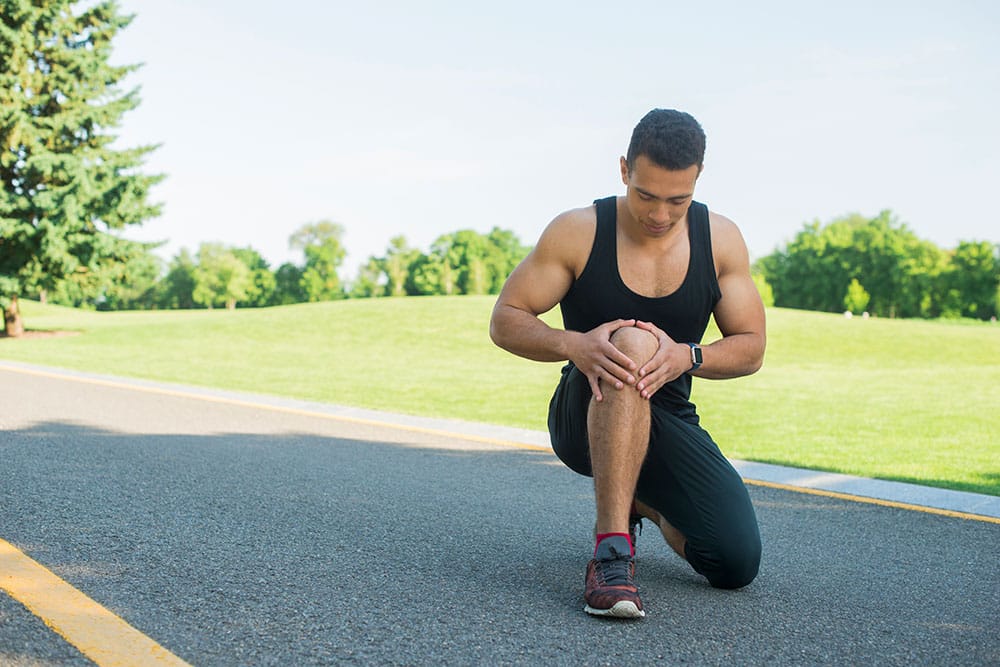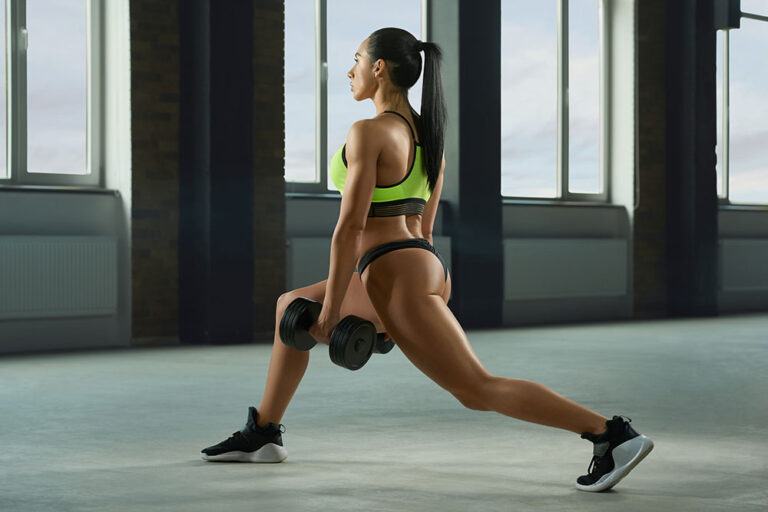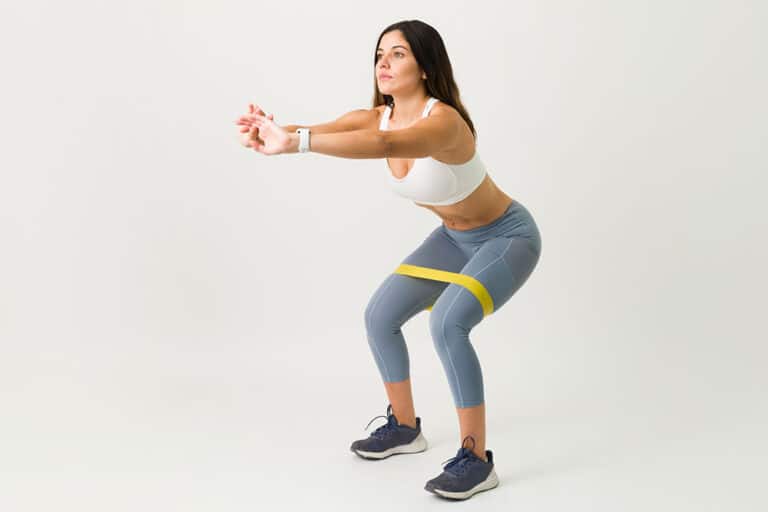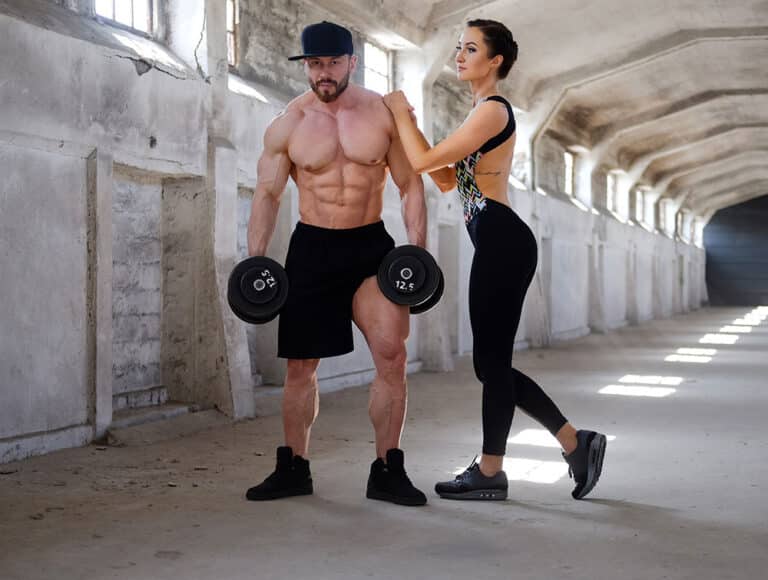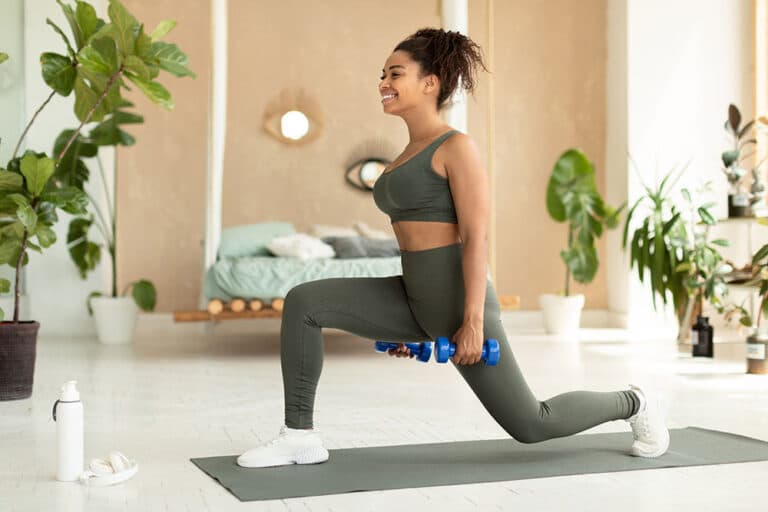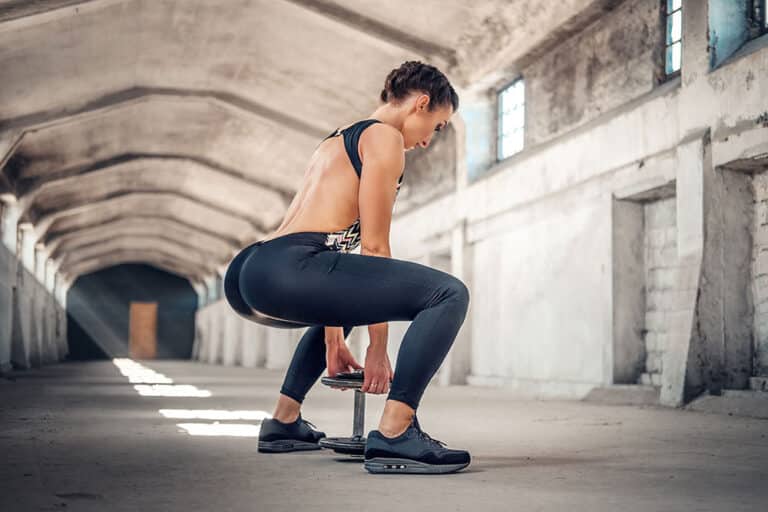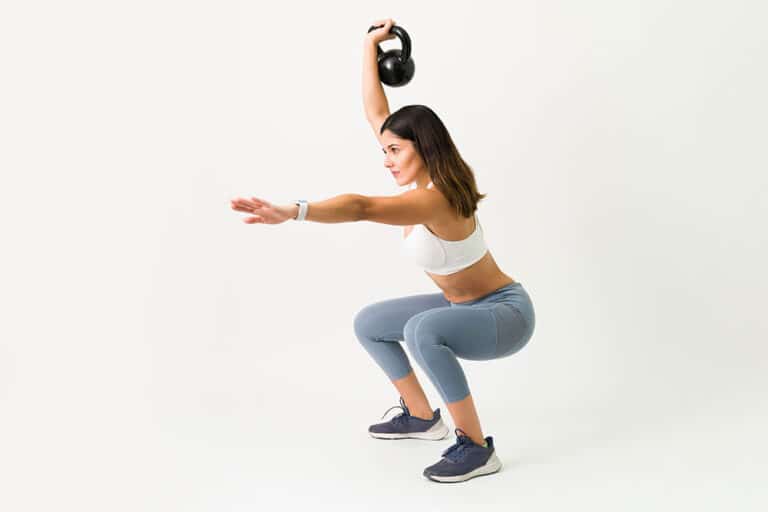Essential Leg Exercises
Incorporating essential leg exercises for bad knees into your routine can significantly improve strength and stability. Working on the hamstrings and quadriceps is particularly beneficial for reducing knee stress (Medical News Today).
Strengthening Hamstrings and Quadriceps
Strengthening the hamstrings and quadriceps should be seen as a combined effort. Building strength in these muscle groups helps limit knee impact, which is key for those looking to avoid long-term knee issues (Solving Pain With Strength).
Hamstring Exercises:
- Standing Hamstring Curls: Perform this exercise by standing straight, lifting one heel toward your glutes, and then switching legs. This engages the hamstring effectively.
- Seated Hamstring Curls: Sit on a chair, place your feet flat on the floor, then bend your knees and drag your feet back while tightening the hamstring muscles.
Quadriceps Exercises:
- Leg Extensions: Sit on the edge of a chair, extend one leg out straight, hold for a few seconds, and slowly lower it. Repeat with the other leg.
- Step Exercises: Use a step or platform, step up with one leg, pull the other leg up to meet it, then step down with the same leg. Alternate legs to engage the quadriceps thoroughly.
Standing Hip Hinge Exercise
The standing hip hinge exercise targets multiple muscles including the glutes, hamstrings, and lower back. This exercise is excellent for maintaining functional movement and strength in the legs.
How to Perform Standing Hip Hinge:
- Stand with feet shoulder-width apart.
- Place your hands on your hips.
- Slightly bend your knees and hinge at your hips, pushing them back while lowering your torso towards the ground.
- Ensure your spine remains neutral and your head aligns with your spine.
- Return to the starting position and repeat.
This exercise not only strengthens the muscles surrounding the knee joint, but it also helps improve balance and stability. It’s a great addition to any leg workout routine. For more on balancing exercises, visit our article on wall exercises for legs.
| Exercise | Target Muscle |
|---|---|
| Standing Hamstring Curls | Hamstrings |
| Seated Hamstring Curls | Hamstrings |
| Leg Extensions | Quadriceps |
| Step Exercises | Quadriceps |
| Standing Hip Hinge | Glutes, Hamstrings, Lower Back |
Engaging in these essential leg exercises can help improve the strength and stability of the knee and leg muscles. For those interested in other leg routines, explore our guide on quick leg workout no equipment.
Specific Leg Exercises
Incorporating specific exercises into a workout routine can greatly enhance leg strength and stability, especially for those looking to alleviate knee pain. The following exercises are effective and low-impact, making them suitable for individuals with knee issues.
Seated Leg Extension
The seated leg extension is a fundamental exercise for targeting the quadriceps. It specifically strengthens the vastus medialis muscle, which is crucial for full leg extension (Healthline).
How to Perform:
- Sit on a chair or bench with your back straight.
- Extend one leg out until it’s straight, keeping your foot flexed.
- Hold for a few seconds, then slowly lower your leg back down.
- Repeat for 10-15 reps and switch legs.
Benefits:
- Strengthens the quadriceps.
- Minimizes knee strain by using body weight instead of additional weights.
Wall-Facing Chair Squats
Wall-facing chair squats are a modified version of traditional squats, designed to provide support and reduce knee strain. They are particularly good for improving leg strength and stability.
How to Perform:
- Stand facing a wall, with feet shoulder-width apart and a chair positioned behind you.
- Sit back into the chair slowly, engaging your core.
- Stand back up, pressing through your heels.
- Repeat for 10-15 reps.
Benefits:
- Engages the glutes, hamstrings, and quadriceps.
- Provides stability and reduces stress on the knees.
For more variations, check out our guide on how to do bodyweight squats.
Low Plank Hold with Knee Flex
This exercise targets the quads, core, and hamstrings, offering a comprehensive workout that supports activities like walking and jogging (Healthline).
How to Perform:
- Start in a low plank position, resting on your forearms and toes.
- Draw one knee towards your chest, then extend it back.
- Alternate legs, maintaining a plank position throughout.
- Perform 10 reps on each side.
Benefits:
- Strengthens the core, quads, and hamstrings.
- Enhances overall leg stability and reduces knee pain.
These specific leg exercises, when performed regularly, can significantly improve leg strength and reduce knee discomfort. For more on keeping your knees healthy and strong, explore our leg exercises for knee pain and morning leg exercises sections.
Leg Exercises for Knee Pain
Individuals experiencing knee pain can still engage in effective leg exercises without exacerbating their discomfort. Here, you will find a selection of exercises specifically designed for those with knee issues, targeting strengthening and flexibility.
Half Squats
Half squats are an excellent exercise to strengthen the quadriceps, glutes, and hamstrings without straining the knees (Healthline). This exercise reduces the range of motion compared to full squats, thus minimizing knee pressure.
How to Perform Half Squats:
- Stand with feet shoulder-width apart.
- Slowly lower your body as if sitting back into an imaginary chair, stopping halfway down.
- Ensure knees remain behind toes and chest stays upright.
- Hold for a few seconds and then return to the starting position.
Leg Extensions with Body Weight
Leg extensions using body weight rather than a weighted machine can help strengthen the quadriceps while alleviating knee pressure (Healthline). These can be performed at home without any special equipment.
How to Perform Leg Extensions:
- Sit on a chair with your feet flat on the ground.
- Slowly extend one leg until it is straight, squeezing the quadriceps.
- Hold the position briefly and then lower the leg back to the starting point.
- Repeat with the opposite leg.
Side Leg Raises
Side leg raises are effective for working the hip abductor muscles, which assist in standing, walking, and rotating the legs. Strengthening these muscles can help prevent and treat knee and hip pain (Healthline).
How to Perform Side Leg Raises:
- Lie on one side with legs stacked.
- Raise the top leg as high as possible while keeping it straight.
- Hold for a few seconds and then lower it back down.
- Repeat on the other side.
These exercises are highly beneficial for knee health. They target specific muscles while reducing stress on the knee joints. For further routines and advice, visit our section on leg exercises for elderly or our guide on how to do bodyweight squats.
Here’s a comparative look at these three exercises:
| Exercise | Target Muscles | Recommended Reps/Sets |
|---|---|---|
| Half Squats | Quadriceps, Glutes, Hamstrings | 2-3 sets of 10-15 reps |
| Leg Extensions | Quadriceps | 2-3 sets of 10-15 reps per leg |
| Side Leg Raises | Hip Abductors | 2-3 sets of 10-15 reps per leg |
These exercises can be incorporated into a wider routine for those looking to strengthen their legs without exacerbating knee pain. For a comprehensive workout plan, check out our quick leg workout no equipment section.
Effective Knee-Strengthening Exercises
Strengthening exercises play a crucial role in managing knee pain and enhancing overall knee health. Understanding the benefits, muscle engagement, and the importance of resistance training is key to effectively incorporating these exercises into a fitness routine.
Benefits of Strengthening Exercises
Strengthening exercises for the knee have multiple benefits, particularly for those experiencing knee pain. According to the Arthritis Foundation, exercise is one of the most effective ways to treat osteoarthritis without medication. By regularly working the muscles around the knee, including the hamstrings, quadriceps, glutes, and hips, individuals can reduce stress on the knee joint (Healthline). Strengthening exercises help in:
- Relieving pressure and strain on the knee joints
- Preventing knee injuries by providing better support
- Improving flexibility and range of motion
- Reducing pain and inflammation associated with conditions like patellofemoral pain and osteoarthritis (Harvard Health Publishing)
Muscles Engaged in Leg Exercises
Different leg exercises target various muscle groups around the knee. Engaging these muscles can help support and stabilize the knee joint. Here’s a breakdown of key muscles involved in knee-strengthening exercises (Medical News Today):
| Exercise | Muscles Involved |
|---|---|
| Leg Lifts | Quadriceps, Abdominals |
| Standing Hamstring Curls | Hamstrings (back of thigh), Gluteal Muscles |
| Leg Extensions | Quadriceps |
| Step Exercises | Quadriceps, Hamstrings, Hip Flexors, Gluteal Muscles |
| Single-Leg Dip | Quadriceps, Hamstrings, Gluteal Muscles |
| Wall Squats | Quadriceps, Gluteal Muscles |
These muscle groups work together to provide stability, reduce stress on the knee joint, and enhance overall leg strength.
Resistance Training for Leg Extensions
Resistance training is particularly beneficial for leg extensions, one of the most effective exercises for strengthening the quadriceps. This form of training helps improve muscle mass, endurance, and functional performance.
Benefits of Resistance Training for Leg Extensions
- Increases muscle strength and hypertrophy.
- Enhances muscle endurance.
- Improves joint stability and function.
It’s essential to use proper form and appropriate resistance levels to avoid injury. Here’s a basic resistance training regimen for leg extensions:
| Exercise | Repetitions | Sets | Resistance Level |
|---|---|---|---|
| Bodyweight Leg Extensions | 12-15 | 3 | None |
| Light Weight Resistance | 10-12 | 3 | 5-10 lbs |
| Moderate Weight Resistance | 8-10 | 3 | 15-20 lbs |
To incorporate these exercises safely, always start with lighter weights and gradually increase the resistance as strength improves. For more detailed instructions on specific leg exercises, explore our internal links on various leg workouts:
- [how to do bodyweight squats]
- [bodyweight leg challenge]
- [calf exercises without weights]
- [quick leg workout no equipment]
By combining resistance training with a variety of leg exercises, individuals can significantly improve knee strength, reduce pain, and enhance overall leg function.
Precautions and Recommendations
For anyone experiencing knee pain, it’s critical to consider several precautions and recommendations before starting and after completing leg exercises. These ensure safety and maximize the benefits of your workout.
Consultation Before Starting
- Consult with healthcare professionals: Before attempting any leg exercises for bad knees, it’s advisable to consult with a healthcare professional. This step is especially important for individuals experiencing severe knee pain. Medical advice should also be sought if any pain is experienced during the exercises to ensure proper guidance and to avoid exacerbating the condition. Medical News Today
Warming Up Before Exercises
- Light exercises for warm-up: Physicians recommend performing light exercises like walking, cycling, or using an elliptical machine before starting any knee-strengthening exercises. These activities help increase blood flow to the muscles and improve flexibility, preparing the knee for more strenuous activities. For more information, visit our guide on morning leg exercises.
Importance of Post-Exercise Stretching
- Stretching post-exercise: Post-exercise stretching is crucial for improving flexibility, reducing pain, and minimizing the risk of injury. Stretching can also enhance the range of motion and mitigate delayed onset muscle soreness in the knee area. Various stretches, such as quadricep stretches, toe touches, and standing hamstring stretches, can complement knee-strengthening routines. For more stretching tips, check out our section on leg strengthening for runners.
| Pre-Exercise Warm-Up | Post-Exercise Stretching |
|---|---|
| Walking | Quadricep Stretch |
| Cycling | Toe Touches |
| Elliptical Machine | Standing Hamstring Stretch |
Following these precautions and recommendations will help in safely performing [leg exercises for bad knees] and achieving optimal results.
- About the Author
- Latest Posts
Johnnie D. Jackow Sr., the founder and CEO of Total Body Fitness, Worldwide, has a long-standing career in the fitness industry. He began as a certified personal trainer in the mid-90s and soon after authored his first weight loss book in 1998. This led to the launch of Total Body Fitness, Nationwide in the USA at the same time. Johnnie gained recognition as the fitness guru of his time, running infomercials on local TV late at night in Houston, Texas. Over the years, he has helped more than 40,000 individuals from all over the world achieve their health and fitness goals. With over 60,000 hours of documented training in integrative functional medicine, he completed his PhD in human physiology in 2010. His primary objective is to assist people in reaching their health and fitness goals through alternative approaches rather than relying solely on conventional medicine and pharmaceutical drugs. Today, with almost three decades of experience under his belt, Johnnie continues to be a leader in health and fitness.

